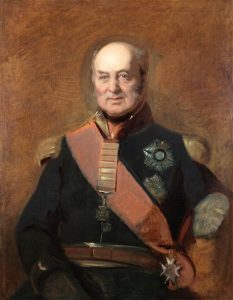After the battle of Trafalgar, Great Britain thought that Spain was at its feet. The citizens of Buenos Aires proved them wrong, not once but twice in as many years.
Once upon a time, in a day as today but back in the early nineteenth century, the British Royal Navy suffered one of the most critical defeats in its history by attempting [and failing twice] to conquer the key city which granted full control of the River Plate, the city of Buenos Ayres. This is how it happened.
Historical context
France was in the aftermath of its Revolution. Napoleon was shaking Europe to the extreme, pushing the Western monarchies to be with or against him. Carlos IV, Emperor of Spain back in those days, a Bourbon, decided to support Napoleon for fear to be invaded, and was forced to attack Portugal during the so-called the War of the Oranges, which it did not end up well, diplomatically speaking, for Spain. Thanks to this war, Portugal became a loyal ally of Britain, France was aware of the economic weakness Spain was going through and, most importantly, Britain too.
Britain, on the other hand, did not experience a good period during those years because of the independence of the United States of America, which turned their interest for the control of America towards the South. Their strategy was mainly about “divide and rule”. If they suffered the independence of their Northern colonies, the Spanish Empire should therefore suffer too, so the obvious thing to do was supporting or enhancing the independence of the Spanish viceroyalties in America.
The Peace of Basel in 1795 ended the war between Spain and France. In 1796, by the Second Treaty of San Ildefonso, Spain joined France in its war with Britain, thus giving Britain cause for military action against Spanish provinces in South America. Britain judged it the right moment after the defeat of the Franco-Spanish fleet at the Battle of Trafalgar in 1805. This battle forced Spain to reduce to a minimum its naval communications with the American provinces.
Last but not least, the expansion of the British Empire was taking place in the form of controlling key commercial maritime cities across the globe. Napoleon developed the French economy by trading with the European countries and blocking Britain towards the trade with Europe, so the only choice for Britain was dominating the trade abroad, and so they did by taking Cape of Good Hope, which was under the rule of the Dutch, in 1806.
For the same reason, Buenos Aires was a strategic town in order to acquire the monopoly of the trade in South America, so part of the same fleet and army that conquered Cape of Good Hope made an expedition through the Atlantic with the 71st Regiment of Highlanders, 1500 men and 36 officials, commanded by the General Beresford, to take Buenos Aires.
The Attack on Buenos Ayres
Buenos Aires was the capital of the River Plate basin. The city was populated by 45,000 people of all kinds and social status within the Viceroyalty of Rio de la Plata, including slaves, natives, mestizos or criollos and Spanish. It is placed in the map nearby Montevideo, another relevant Spanish port. The Viceroy of Rio de la Plata, Marquis Rafael de Sobremonte, urged the Spanish Crown to help the Viceroyalty with reinforcements after being informed by his intel that the British were coming, but the only thing that was sent was artillery and ammunition to train the militia. With a lack of professional troops, the Viceroy sent most of them to protect Montevideo, leaving Buenos Aires almost defenceless. This was the perfect opportunity for Beresford to easily land in Quilmes, a town nearby Buenos Aires, and taking the city within the next two days without opposition.
After the defeat, the Viceroy retreated to the region of Cordoba with the city’s treasure and the citizens of Buenos Aires took this as an act of cowardice because they were abandoned to the British expense. Moreover, the treasure was lost during the retreat.
The news about the British victory were delightfully spread by The Times in September of the same year: “there can be hardly a doubt that the whole colony of La Plata will share the same fate as Buenos Aires; and from the flattering hopes held out to the inhabitants in the proclamations of General Beresford, they will see that it is their true interest to become a colony of the British Empire.” Yet the excitement was premature as the citizens of Buenos Aires, thanks to Martin de Alzaga, had recaptured the city before the news reached Britain.
Eventually in 1807, the British felt honour bound to make a second attempt. Grandly named as the Governor-General of South America, General Whitelocke sailed into the River Plate in May 1807 with a force of 11,000 men. This tale deserves deeper research, and we will be honoured to share it with you on our next drop.
Share this article
On This Day
No Events
History of Spain
26 August 2020
27 January 2021
Communism: Now and Then
23 December 2022
28 July 2021










